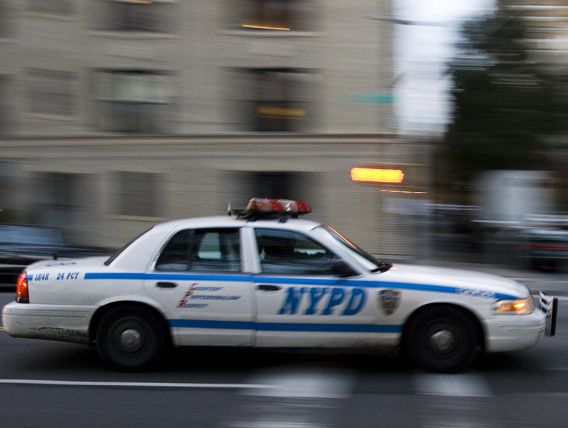
Recent tragic events in Connecticut have brought safety to the forefront of everyone’s minds in and around the area. With such random and thoughtless violence taking place in a location previously considered safe, one has to wonder – is anywhere safe? What about New York City, which has a particular reputation worldwide for violent crimes?If you are living in the city and are concerned about recent events, you may find this article comforting and surprising. New York City has a complicated relationship with crime and violence, but is New York City really that much more dangerous than other world cities? Do these widely reported crimes, though clearly destructive and unconscionable, show that New York City lives up to the image of a crowded, dangerous place? New York International looked into the issue, and the answer is surprising. Regardless of isolated incidents we found a secure, prosperous city, safer than ever. Why then, is international opinion so divided on whether or not NYC is a safe place?
International Perspectives
Naturally, ideas and images of NYC change depending on where you travel. JJ O’Callaghan, from Ireland, reports, “[I’ve] been in New York twice, in 1982 and again in 2003. In 1982 I was traveling with two friends, and we just got out of the taxi from the airport when we were panhandled for money in Washington Square […]. In 2003 the fruits of Zero Tolerance were obvious; I felt safer walking around Manhattan after midnight than I do in Dublin.”Michelle Bennet, from England, explains that before traveling to NYC “my mum gave me a security alarm! I did think it was going to be quite intimidating as it’s the big city but the only time I felt out of my comfort zone was when we were on the underground and had an odd, random guy talking to us.” She admitted, though, that “my stereotype was nothing like how it is over there.”
Negative Stereotypes: Truth or Fiction?
“With all the carnage from gun violence in our country, it’s still almost impossible to believe that a mass shooting in a kindergarten class could happen. It has come to that. Not even kindergarteners learning their A,B,Cs are safe. We heard after Columbine that it was too soon to talk about gun laws. We heard it after Virginia Tech. After Tucson and Aurora and Oak Creek. And now we are hearing it again. For every day we wait, 34 more people are murdered with guns. Today, many of them were five-year olds. President Obama rightly sent his heartfelt condolences to the families in Newtown. But the country needs him to send a bill to Congress to fix this problem. Calling for ‘meaningful action’ is not enough. We need immediate action. We have heard all the rhetoric before. What we have not seen is leadership – not from the White House and not from Congress. That must end today. This is a national tragedy and it demands a national response. My deepest sympathies are with the families of all those affected, and my determination to stop this madness is stronger than ever.”
Whatever the case is currently, the statistics speak for themselves, and the dark, violent New York of the past bears little resemblance to the city today.

The U.S. has roughly 182 cities with populations of 100,000 or more; of these, New York City ranks remarkably low for overall crime rates – 136th in a 2009 study by Zeranski and Todd. Despite lower crime figures than ever, international opinion is that New York City seems dangerous.In reality New York City is no more dangerous than London, Paris or Tokyo and in fact several studies have suggested that New York is far safer than London [1]. Negative stereotypes ignore the obvious truth that New York is a prosperous city in a stable democracy and has levels of affluence and safety sadly lacking in cities throughout parts of Africa, Asia and South America. Indeed, for many internationals from Mexico and other South American countries, moving to NYC is a very deliberate choice of safety over familiarity. With drug-related and violent crime rates at a worrying high in those countries, the stability and prosperity of New York City offers internationals a viable new home far removed from such problems.The 9/11 attacks have, as expected, resulted in tighter and better security than ever before in the city, and with a few basic precautions internationals can lower the already slim chance that they’ll be the victim of a crime. Traveling on the subway very late at night, or to less familiar parts of the city without knowing where you are headed, is unwise even at the best of times. In crowded streets you can avoid heartache by making sure your wallet and valuables are secure and you are aware of your surroundings. Equally, having unreal expectations will only lead to disappointment -yes, you can ask strangers on the street for directions if you’re lost, but as with people everywhere, some will help you, and some will not. Preparation is the key if you’re traveling in a new area.
Actively Changing Stereotypes
New York City is enjoying a historically low crime rate and increased investment in outlying regions. The gritty slums of the past are now the up and coming areas of the future. As the population grows and the demand for quality apartments and amenities continues, no-go areas are becoming, one by one, family-friendly neighborhoods. In many ways New York City is a perfect role model for other major cities looking to lower their crime rates. Can cultural attitudes be changed as easily? Perhaps not, but every visitor, tourist and international resident who comes to see for themselves that NYC is a welcoming, vibrant place has their part to play in removing old stereotypes and continuing to spread the city’s good name.
http://www.nysun.com/new-york/ny-fares-well-vs-london-in-a-new-study/83495/

